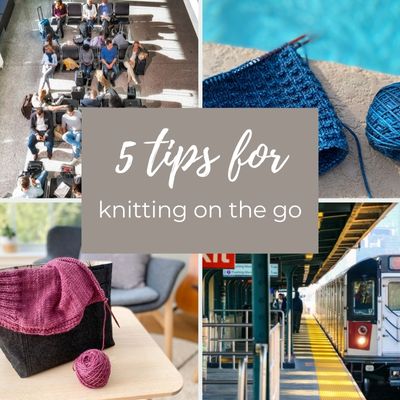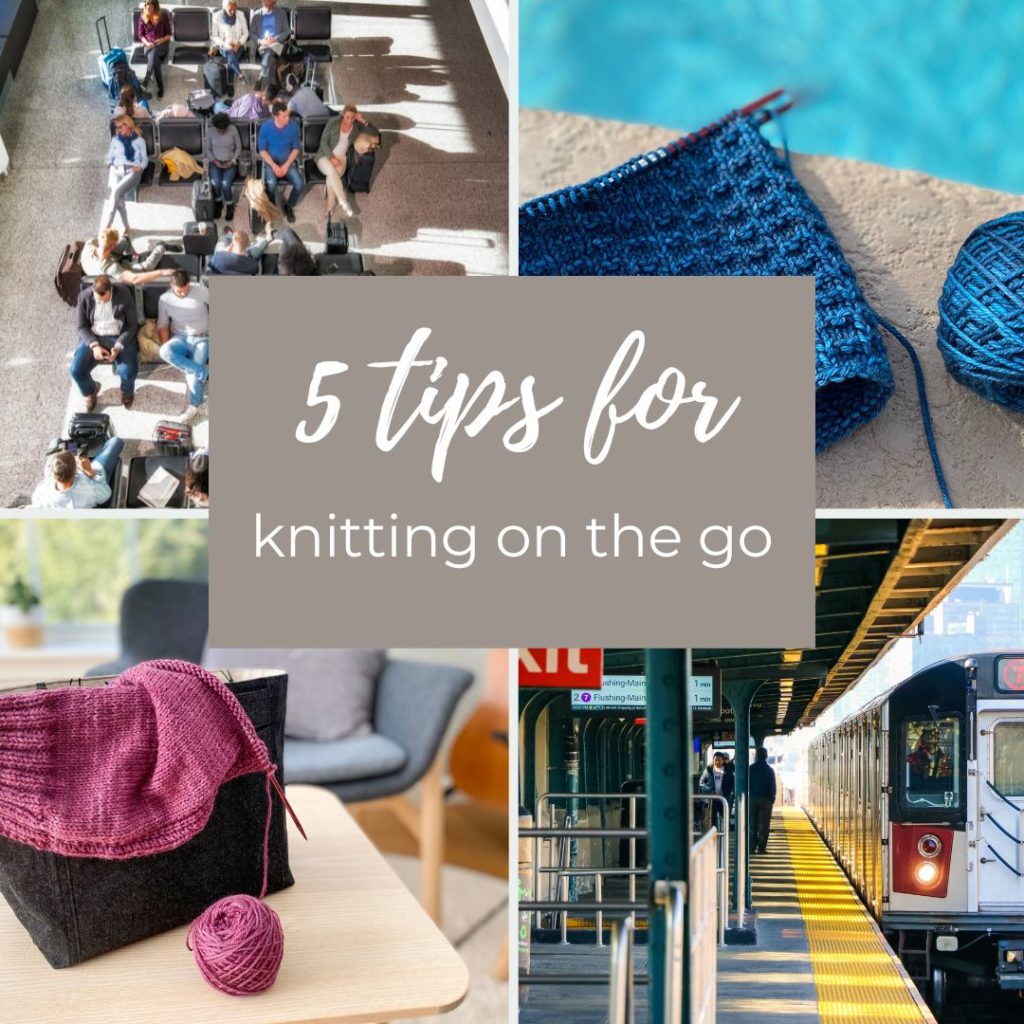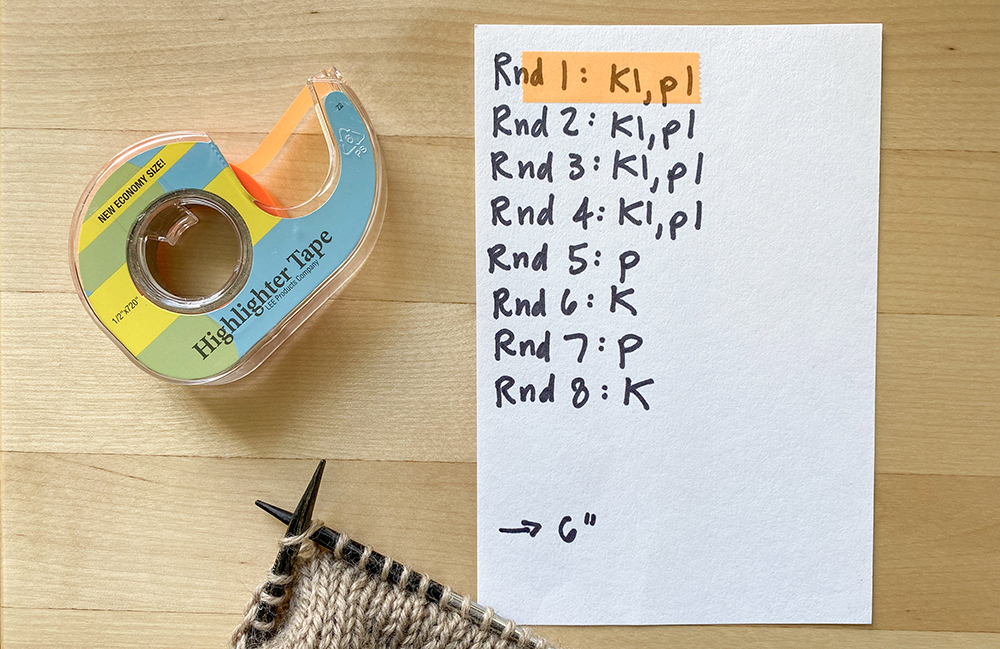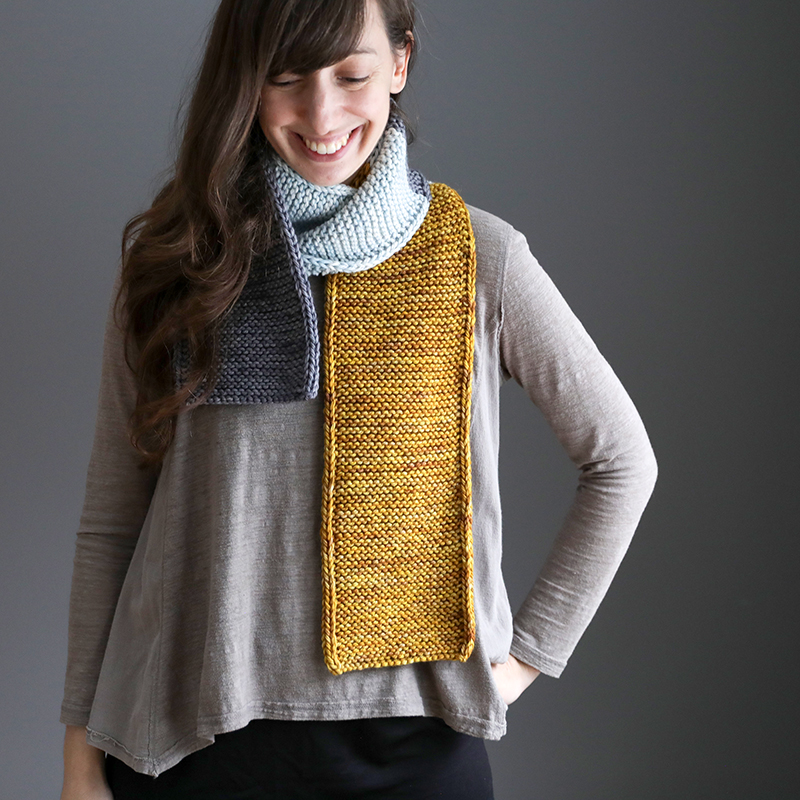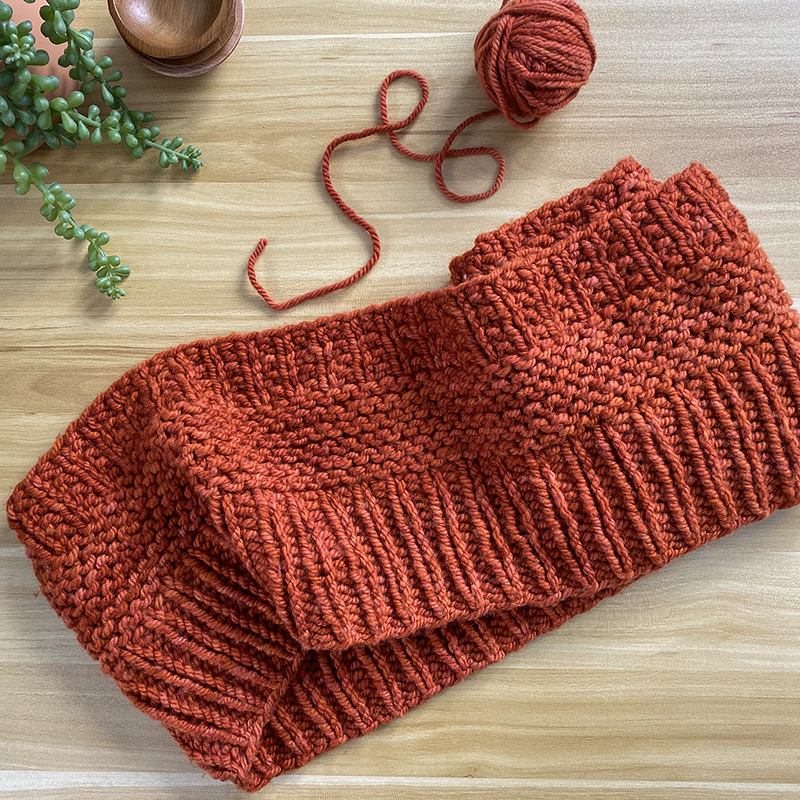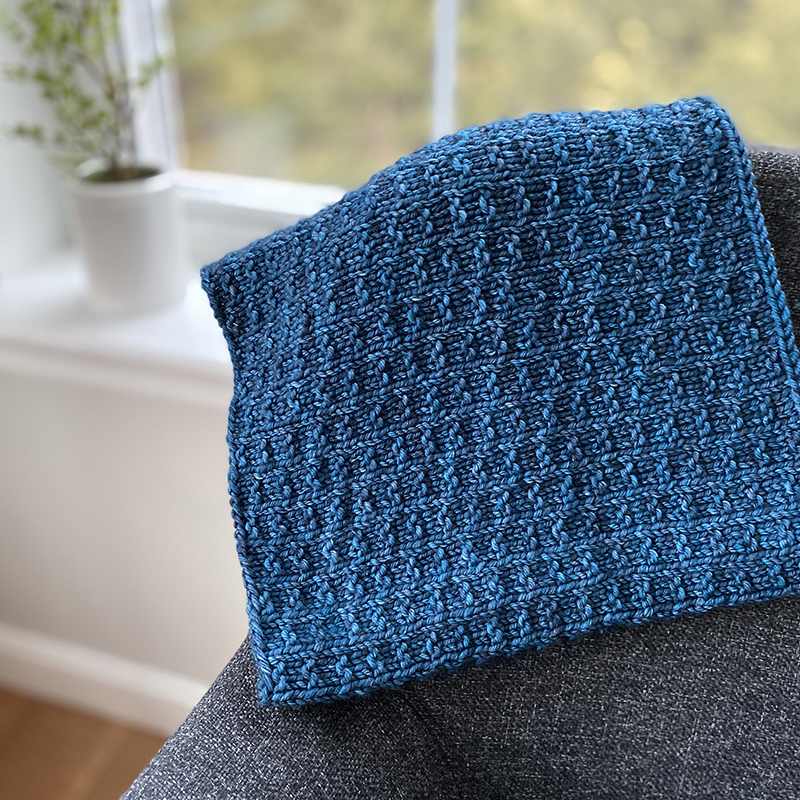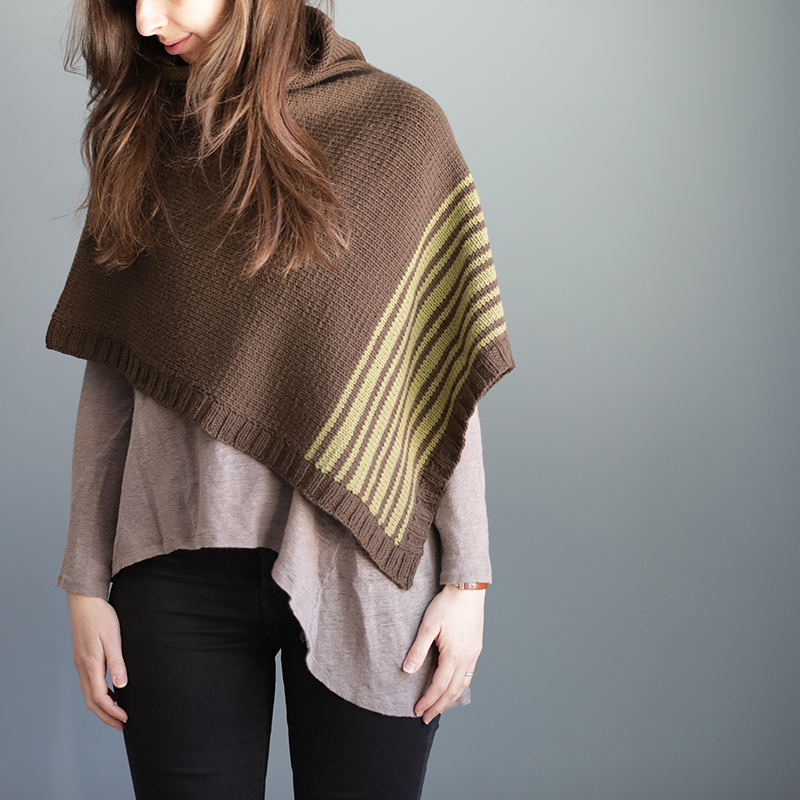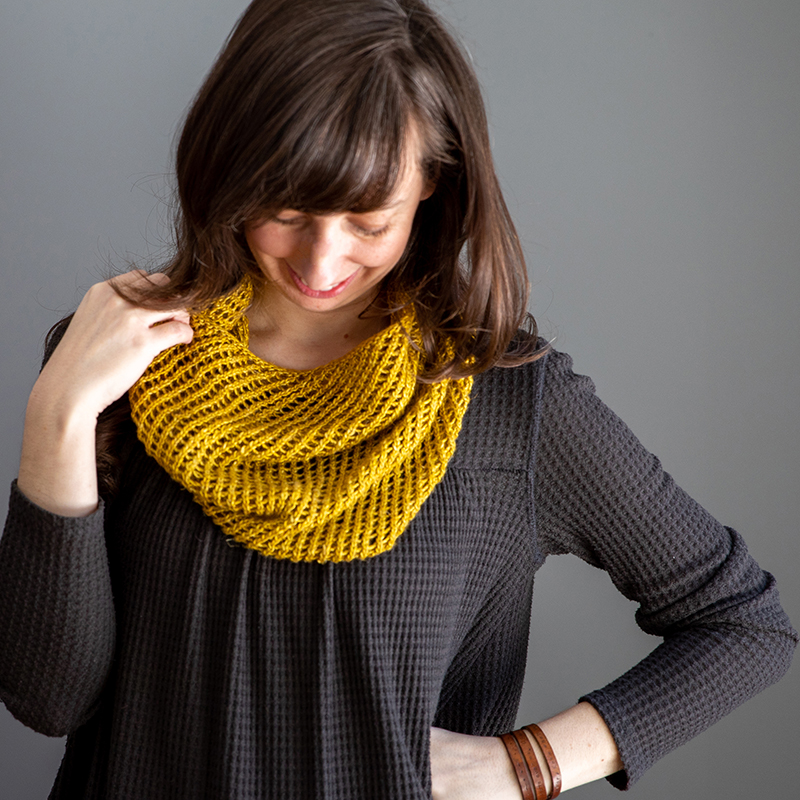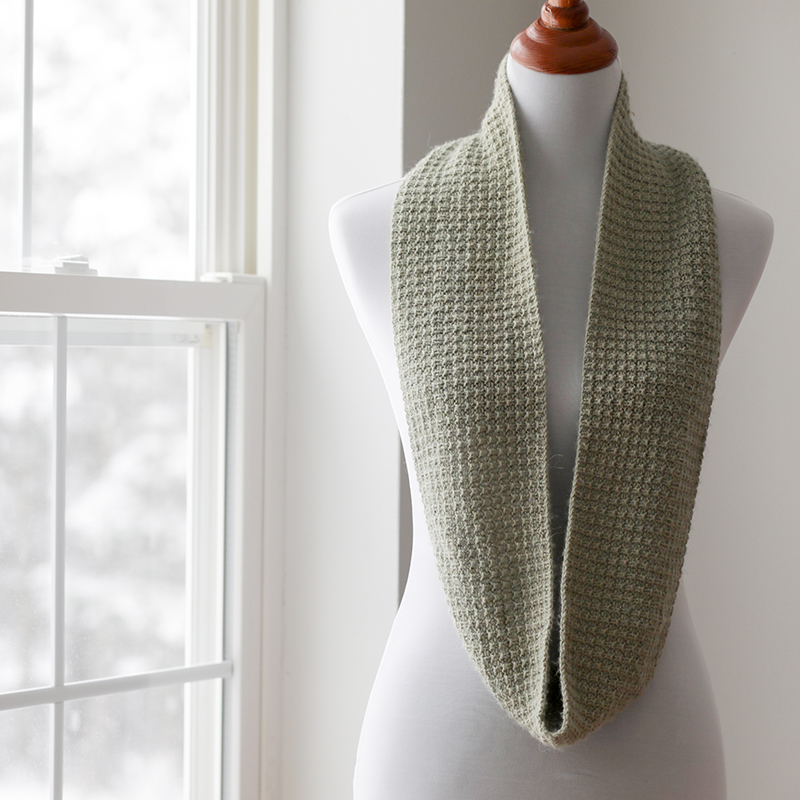With Thanksgiving almost upon us here in the U.S, I thought it might be a good time to talk about what I think makes for good travel knitting (both project-wise, and just general tips). It’s different for everyone, but for me, here are 5 tips for knitting “on the go” that have worked well for me!
1. Easy stitch pattern
Whether you’re the passenger in a car, train or plane, or just visiting with friends or family, odds are you will be distracted. So bringing a project that has an easy stitch pattern may be the way to go. Now “easy” is going to be different for each of us. But you know for yourself the types of stitch patterns that you can do a bit more mindlessly. Garter stitch and Stockinette stitch are definitely considered mindless for most of us. And if you’ve learned to “read your knitting“, many other knit/purl combo stitch patterns can be done without having to look up and down at your pattern all the time (like different rib stitches, seed stitch, basketweave, etc).
2. Easily picked up and put down:
When you’re traveling, odds are there may be moments where you will have to put your knitting down with little notice. And then when you pick it back up, you need to remember where you left off. So picking a project where this sudden “putting down/picking up” won’t leave you totally confused.
3. Use an index card for stitch patterns:
Depending on your mode of travel and how much room you may have, sometimes jotting notes on your pattern can become cumbersome. And sometimes having the full pattern just takes up too much space on your lap. But unless you’re just knitting plain stockinette stitch or garter stitch, often you will need some reference to know what row/round you should be on. For these times, consider using an index card and highlighter tape!
The example above is my Lorraine Cowl stitch pattern. I took a sharpie and wrote out the 8-round repeat in large print on an index card. Then I cut a piece of highlighter tape – this type of tape is removable, so you just place it on the round you currently are on and when you’re done, you just peel it up and place it on the next round. You could also use a penil/pen to mark the repeats, but this is great writing-utensil-free option to consider! Plus having the pattern just on an index card makes for easier reading/carrying. And as you can see at the bottom, I just made a note that means I repeat those until it measures 6″. Also, it may be good to bring the highlighter tape with you – sometimes over time it looses it’s stickiness so you may need a fresh piece from time to time.
(note: I learned this index-card idea from my Mom. She’s been an educator for her whole life, so it’s no surprise she taught me this little trick!)
4. Not too big:
Smaller projects are ideal, especially if you are on the move. Things like socks and cowls can be perfect. But I also often travel with garments like vests and sweaters too – it just depends on what part of the project I am on. If I’m just working on the body of a sweater, then that’s fine. But if I’m working a ‘all-in-on-piece’ sweater and I’m at the final steps where I’m working the sleeves, then that’s quite a heavy project and perhaps not ideal for traveling.
4. Easy to see:
As I’ve gotten a little older, I am finding that certain color yarns are best left at home where I am guaranteed nice, bright light! If you are working on a project with dark yarn, and especially if the stitch pattern is anything but just plain stockinette stitch or garter, and if your eyes are perhaps not as good as they used to be, it might be best to consider using a lighter color yarn. Car and train rides, as well as on a plane, can often mean dimmer light and those stitches may become much harder to see. Alternatively, I have heard positive things about “knitting neck lights” – there are lots of different brands out there so if this is a common problem for you it may be worth investigating!
Looking for travel-friendly project inspiration? Here are some ideas:
This bulky-weight, garter stitch scarf features an icord edge on either side. So at first you’ll just have to remember how these edge stitches are worked, but after a while you should have it memorized.
This sport/DK-weight little cowl features a mix of rib stitch + garter stitch in the round.After a while you may be able to ‘read your knitting’ and just know which round you’re on by looking at it.
This long, infinity-style cowl features 3 sections of simple knit/purl combinations. And it uses bulky-weight yarn, so it’s a quick knit too.
This small worsted-weight cowl features a knit/purl stitch pattern that can be easy to “read” after a while (plus my tips page shows you how!).
This worsted-weight poncho is knit sideways and then attached together at the end. So after working the initial ribbing, you’ll be working in Stockinette stitch for quite a long time! Great for travel time.
These arm-warmers would be good for traveling if you’re comfortable with the magic loop method (pattern includes video lesson too). They have become my go-to travel project because you just knit every round!
If you’re comfortable with reading your knitting a bit and working yarn-overs, this sport-weight mesh cowl can be great for traveling. My tips page also helps you learn how to read your knitting with this stitch pattern.
What else to consider when travel knitting?
In addition to obviously bringing your yarn (wound-up), needles and pattern, it’s also good to bring a little container of notions. Here is what I like to make sure I have handy:
- little scissors (note: if your traveling by plane, last I checked TSA allowed scissors no more than 4″ from the pivot point and they should be securely wrapped.)
- stitch markers.
- tapestry needle (hey, maybe you’ll finish and want to weave in ends!).
- measuring tape.
- needle size checker (only if you are bringing multiple needles and can’t read the needle size listed on the needle).
I hope some of this has been helpful as you plan your next travel knitting project! Do you have any other travel-knitting tips? I’d love to hear about them!

